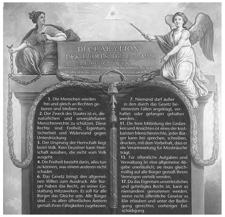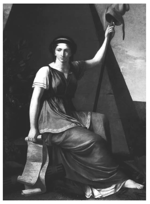NCERT Solutions for Chapter: The French Revolution, Exercise 3: Activity
NCERT Social Science Solutions for Exercise - NCERT Solutions for Chapter: The French Revolution, Exercise 3: Activity
Attempt the free practice questions on Chapter 1: The French Revolution, Exercise 3: Activity with hints and solutions to strengthen your understanding. India and the Contemporary World - I (Textbook of History) solutions are prepared by Experienced Embibe Experts.
Questions from NCERT Solutions for Chapter: The French Revolution, Exercise 3: Activity with Hints & Solutions
Identify the symbols in the image which stand for liberty, equality and fraternity.








Explain the meaning of the painting of the Declaration of Rights of Man and Citizen in the image given by reading the symbols.

The revolutionary journalist Jean-Paul Marat commented in his newspaper L’Ami du Peuple (The friend of the people) on the Constitution drafted by the National Assembly: ‘The task of representing the people has been given to the rich … the lot of the poor and oppressed will never be improved by peaceful means alone. Here we have absolute proof of how wealth influences the law. Yet, laws will last only as long as the people agree to obey them. And when they have managed to cast off the yoke of the aristocrats, they will do the same to the other owners of wealth.’ Source: An extract from the newspaper L’Ami du Peuple.
Read the paragraph given above and answer the following:
1. Which groups of French society would have gained from the Constitution?
2. Which groups would have had reason to be dissatisfied? What developments does Marat anticipate in the future?
Imagine the impact of the events in France on neighbouring countries such as Prussia, Austria-Hungary or Spain, all of which were absolute monarchies. How would the kings, traders, peasants, nobles or members of the clergy here have reacted to the news of what was happening in France?
Look carefully at the painting and identify the objects which are political symbols. (broken chain, red cap, faces, Charter of the Declaration of Rights).
The pyramid stands for equality, often represented by a triangle. Use the symbols to interpret the painting.
Describe your impressions of the female figure of liberty.

